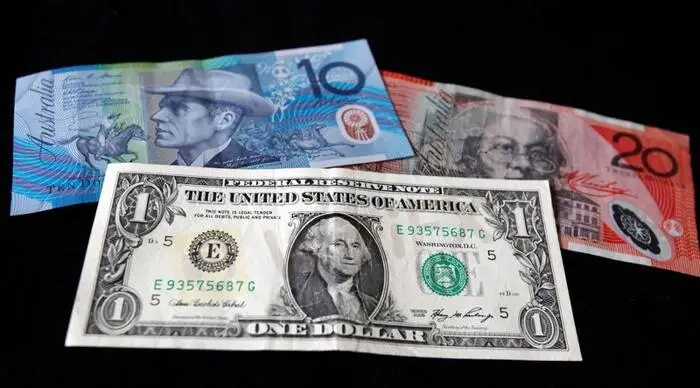简体中文
繁體中文
English
Pусский
日本語
ภาษาไทย
Tiếng Việt
Bahasa Indonesia
Español
हिन्दी
Filippiiniläinen
Français
Deutsch
Português
Türkçe
한국어
العربية
Keep Silence to FX Scams? NO! EXPOSE Them on WikiFX!!What's more,you can inquire and choose a goo
Abstract:The Australian dollar ticked higher on Tuesday ahead of an expected half-point increase in the Reserve Bank’s policy rate, while the yen slid against the greenback amid a rise in U.S. Treasury yields.
Australia‘s dollar erased early gains on Tuesday after the country’s Reserve Bank delivered an as-expected half-point rate hike but not the hawkish forward guidance that some had hoped for.
The yen slid back toward a 24-year low to the greenback on a rise in U.S. Treasury yields, while the euro edged higher, adding some distance from five-year lows.

The Aussie ticked 0.09% lower to $0.6820, after trading as high as $0.6895 earlier in the day.
Both traders and analysts had predicted a second straight 50 basis-point hike on Tuesday. Governor Philip Lowe had said ahead of the meeting that the choice would be between a quarter- and half-point increase, although the U.S. Federal Reserves 75 basis-point increase last month had fuelled speculation the RBA might need to be more aggressive.
“We got a small wobble in the Aussie as the statement appears to confirm that if the RBA board did debate an option other than the 50 basis points we got, it was the 25 basis points that Governor Lowe flagged a couple of weeks ago, and not 75 basis points,” said Westpac strategist Sean Callow.
“No last minute FOMC-style swing to more aggressive tightening.”
Meanwhile, the U.S. dollar was up 0.4% at 136.23 yen, gaining support from a strong rebound in the 10-year Treasury yield, which jumped as high as 2.9780% in Tokyo on Tuesday from the lowest since May at 2.7910% on Friday.
There was no trading in Treasuries on Monday, with U.S. markets closed for the Fourth of July holiday, which also lightened volumes in currency markets.
The dollar index – which measures the buck against six major peers – was about flat at 105.15 after finishing Monday largely unchanged.
On Friday, it rose as high as 105.64, threatening the two-decade peak of 105.79 reached in mid-June.
The euro, which is the most heavily weighted in the index, rose 0.15% to $1.0436 after ending Monday about flat. Over the past two months, it has been bumping against a floor around $1.035, levels not seen since the beginning of 2017.
The euro got support overnight from a rise in regional yields after Bundesbank chief Joachim Nagel said the very accommodative stance of the European Central Bank (ECB) would swiftly be abandoned and a restrictive policy stance might be needed to achieve the inflation target.
The ECB is gearing up to raise interest rates for the first time in a decade later this month.
The policy outlook may not sustain the euro longer term though, National Australia Bank markets economist Tapas Strickland wrote in a note to clients.
“Europe remains stuck in the middle between the Russia-Ukraine crisis and a weakening global economy,” he said.
“Given Europes dire predicament, it is hard to see an enduring euro rally, which may keep USD strength going for longer.”
Disclaimer:
The views in this article only represent the author's personal views, and do not constitute investment advice on this platform. This platform does not guarantee the accuracy, completeness and timeliness of the information in the article, and will not be liable for any loss caused by the use of or reliance on the information in the article.
WikiFX Broker
Latest News
Geopolitical Events: What They Are & Their Impact?
Volkswagen agrees deal to avoid Germany plant closures
Top 10 Trading Indicators Every Forex Trader Should Know
WikiEXPO Global Expert Interview: Simone Martin—— Exploring Financial Regulation Change
TradingView Launches Liquidity Analysis Tool DEX Screener
MultiBank Group Wins Big at Traders Fair Hong Kong 2024
'Young investors make investment decisions impulsively to keep up with current trends' FCA Reveals
Why Do You Feel Scared During Trade Execution?
CySEC Settles Compliance Case with Fxview Operator Charlgate Ltd
Malaysian Influencer Detained in Taiwan Over Alleged Role in Fraud Scheme
Currency Calculator


